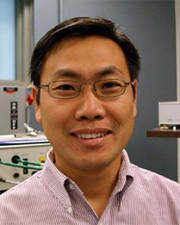Research Overview—
Our current research projects range from the study of hypoxia, cerebral injury due to ischemia, to toxicity and carcinogenesis of heavy metals, with a theme of understanding the role of free radicals in signal transduction and its associated oxidative damage.
Hypoxia inducible factors (HIF) are critical in cell survival under hypoxic exposures. Many pathological conditions lead to hypoxia, such as stroke. Stroke is the third leading cause of death in the United States. The overall hypothesis of our research is that free radicals generated during cerebral ischemia play a significant role in brain injury by affecting the expression of HIF and its downstream genes. Specifically, we are investigating how free radicals and cellular redox environment interact with HIF-1 in cerebral ischemia. The goal of the research is to investigate the mechanism of free radical induced-brain injury during ischemia and to design better pharmacological intervention strategies to minimize the damage caused by stroke. To achieve the goal, we are trying to address the following questions. 1) How is HIF-1 expression regulated under low oxygen conditions in neuronal cells? 2) Does redox environment regulate HIF-1 expression in neurons under low oxygen conditions? 3) Does redox environment affect the activities of proteasomal degradation pathways, which degrade HIF-1 under normoxic conditions? More importantly, 4) does HIF-1 protect neurons from ischemic injury? If so, how?
Oxidative stress has been suggested to be involved in metal-induced toxicity and carcinogenicity. Possibly, other risk factors and toxic compounds such as alcohol may exaggerate the toxic effects of metal ions. The goal of our research in this area is to understand the biochemical mechanisms responsible for toxicity and carcinogenesis following exposure to arsenic, especially in conditions of concomitant with alcohol. We will attempt to answer the following questions. Whether arsenic and alcohol synergistically induce free radical formation under physiologically pertinent conditions? What is the mechanism responsible for generating the reactive species? Whether cellular antioxidants attenuate cellular damage by these compounds? What are the effects of these compounds and their related free radicals on gene expression? We hope that these studies will provide evidence for an oxidative damage pathway for the action of arsenic and alcohol and provide insight into the mechanism of metal induced-brain injury and cancer.
Lab Members —
Former Members
| Name | Title | Post KU |
|---|---|---|
| Mohammed Almutairi | Graduate Student | Assistant Professor, King Saud University, Riyadh, Saudi Arabia |

